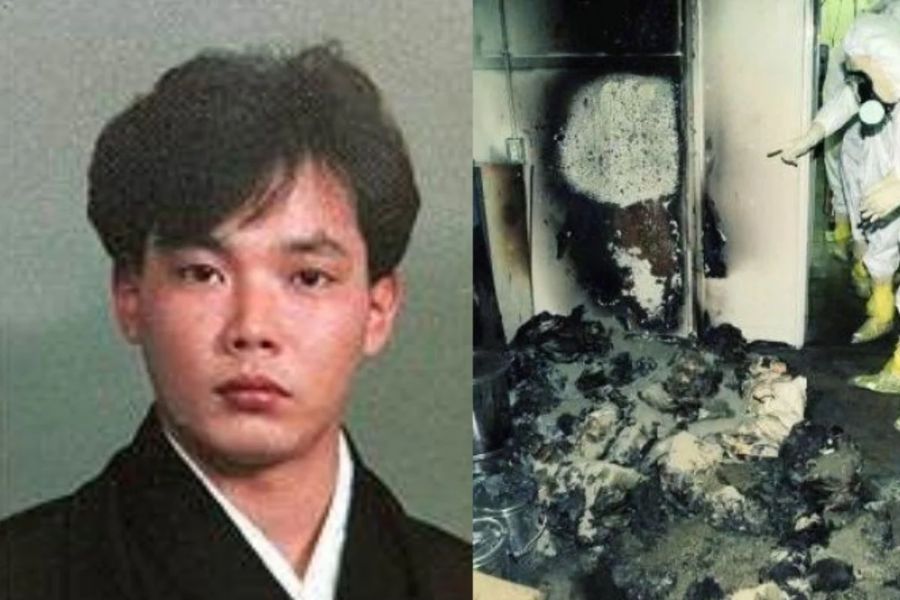Hisashi Ouchi Final Photo: A Heartbreaking Look At Tragedy And Human Resilience
The story of Hisashi Ouchi and his final photo is one that resonates deeply with the themes of tragedy, resilience, and the human spirit. Hisashi Ouchi became a symbol of the consequences of nuclear accidents, and the image of his final moments serves as a reminder of the fragility of life. This article delves into the details of Ouchi's tragic story, providing insights into the accident that changed his life, the medical response, and the ethical dilemmas faced by those involved.
Understanding the events surrounding Hisashi Ouchi is crucial to grasping the full impact of the 1999 Tokaimura nuclear accident in Japan, which led to his suffering. This article will explore the incident's background, the aftermath, and the broader implications for nuclear safety. The final photo of Ouchi has become an emblematic representation of the tragedy faced by victims of nuclear disasters.
We will also analyze the ethical questions raised by Ouchi's case, the treatment he received, and how his story has influenced public perception of nuclear energy and safety protocols. Join us as we navigate through the details of Hisashi Ouchi's final moments, reflecting on how they encapsulate both human suffering and the resilience of the human spirit.
Table of Contents
- Biography of Hisashi Ouchi
- The Tokaimura Nuclear Accident
- Medical Response and Treatment
- Ethical Dilemmas in Medical Care
- Public Reaction to Hisashi Ouchi's Case
- Nuclear Safety Protocols Post-Accident
- Legacy of Hisashi Ouchi
- Conclusion
Biography of Hisashi Ouchi
Hisashi Ouchi was born on March 5, 1960, in Japan. He was a worker at the Tokaimura nuclear facility, where he was involved in the production of nuclear fuel. Hisashi was known as a dedicated worker, but his life took a tragic turn during a catastrophic accident in 1999.
Personal Data and Biodata
| Name | Hisashi Ouchi |
|---|---|
| Date of Birth | March 5, 1960 |
| Occupation | Nuclear plant worker |
| Incident Date | September 30, 1999 |
| Date of Death | December 21, 1999 |
The Tokaimura Nuclear Accident
The Tokaimura nuclear accident occurred on September 30, 1999, at the JCO reprocessing plant in Tokaimura, Japan. This incident was one of the worst nuclear accidents in Japanese history and involved a criticality accident, where a chain reaction was inadvertently initiated due to human error.
During the incident, two workers were mixing uranium solution in a precipitation tank, and they exceeded the safe limits of uranium concentration. This mistake caused an uncontrolled nuclear chain reaction, leading to a massive release of radiation. Hisashi Ouchi was one of the workers exposed to high levels of radiation.
As a result of the accident, Ouchi suffered from severe radiation burns and acute radiation syndrome, which led to a long and painful battle for survival.
Medical Response and Treatment
Hisashi Ouchi was transported to the University of Tokyo Hospital, where he received emergency medical treatment. The medical team faced numerous challenges in treating Ouchi due to the severity of his condition.
- Ouchi was subjected to multiple blood transfusions.
- Doctors used experimental treatments, including bone marrow transplants.
- Despite aggressive medical efforts, the prognosis remained grim due to the extensive damage caused by radiation.
Ethical Dilemmas in Medical Care
The case of Hisashi Ouchi raised significant ethical questions regarding the treatment of patients suffering from radiation exposure. As his condition deteriorated, medical staff had to weigh the options of continuing aggressive treatment versus palliative care.
Some of the ethical dilemmas included:
- Balancing the use of experimental treatments against Ouchi's quality of life.
- Deciding whether to continue treatment despite the low chances of recovery.
- Informed consent and the patient's autonomy in decision-making.
Public Reaction to Hisashi Ouchi's Case
The public reaction to Hisashi Ouchi's suffering was profound. Media coverage of his condition drew attention to the risks associated with nuclear energy and the need for better safety protocols. Many people were horrified by the details of his treatment and the impact of radiation exposure.
Public sentiment shifted towards a more critical view of nuclear energy, leading to protests and calls for stricter regulations in the industry.
Nuclear Safety Protocols Post-Accident
In the wake of the Tokaimura accident, Japan implemented several reforms to enhance nuclear safety protocols. Key changes included:
- Stricter regulations on uranium handling and processing.
- Improved training programs for nuclear facility workers.
- Increased oversight by government agencies to ensure compliance with safety standards.
Legacy of Hisashi Ouchi
The legacy of Hisashi Ouchi extends beyond his tragic story. He became a symbol of the risks associated with nuclear energy and the importance of safety measures in the industry. His case prompted discussions about the ethical treatment of patients suffering from radiation exposure and the need for a compassionate approach to medical care.
Conclusion
Hisashi Ouchi's final photo and his heartbreaking story serve as a stark reminder of the consequences of nuclear accidents and the resilience of the human spirit in the face of tragedy. Through this article, we have explored the events surrounding his life, the incident at Tokaimura, and the ethical dilemmas that arose during his treatment.
We encourage readers to reflect on the implications of Ouchi's story and to engage in discussions about nuclear safety, medical ethics, and the human experience in the face of adversity. Please leave your comments below, share this article, or explore more on our site for further insights.
Thank you for reading, and we hope to see you again soon!
What Happened To Jessica Tarlov's Voice? A Comprehensive Look
Crime Scene: The Real Gypsy Rose Story
Exploring The Crime Scene Of Gypsy Rose: A Deep Dive Into A Gripping Story


